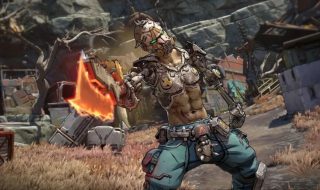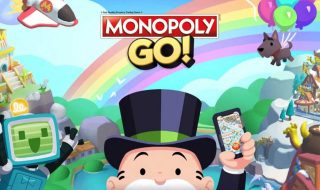Web3 has shown its potential and aims to revolutionize various industries including gaming. Web3-based games let gamers engage with games in a better way and also open opportunities to earn via cryptocurrencies and NFTs. In this article, I will explain Web3 and how it differs from traditional gaming. I will also note the key challenges web3 gaming will have to conquer.
Web3 gaming refers to the use of blockchain technology in gaming to create decentralized, transparent, and secure gaming experiences. This can include games that use cryptocurrency or non-fungible tokens (NFTs) as in-game assets, as well as games that are built on decentralized networks and use smart contracts to govern in-game economies and player interactions. The goal of web3 gaming is to create a more open and equitable gaming ecosystem, where players have more control over their in-game assets and experiences.
Also see: What is DeFi?
Key components of Web3 gaming
Web3 gaming has several key components that make it different from traditional gaming. These include:
Decentralization
Web3 gaming is built on decentralized networks such as Ethereum, which means that the game is not controlled by a single entity, but rather by a network of users. This allows for more transparency and fairness in the game, as well as increased security for player assets.
Cryptocurrency and NFTs
Many web3 games use cryptocurrencies, such as Bitcoin or Ethereum, as a means of in-game transactions. Additionally, web3 games also often use non-fungible tokens (NFTs) as unique, one-of-a-kind assets in the game. These NFTs can represent in-game items, characters, or even virtual real estate.
Smart contracts
Smart contracts are self-executing contracts with the terms of the agreement written directly into lines of code. They allow for the decentralized, trustless execution of actions and transactions within the game. This allows for the creation of complex in-game economies, and player interactions that are governed by transparent and fair rules.
Interoperability
Web3 games are designed to be interoperable with other games and applications on the blockchain. This allows for the seamless exchange of assets and items between different games and platforms, creating a more open and interconnected gaming ecosystem.
Community ownership
Web3 gaming gives players a sense of ownership over their in-game assets, as they have control over their assets even if the game developer is no longer around. Players also have the ability to trade, sell and buy assets on the open market, creating a sense of community ownership.
Web3 gaming aims to create a more open and equitable gaming ecosystem by leveraging blockchain technology to create decentralized, transparent, and secure gaming experiences. It enables players to have more control over their in-game assets and experiences and creates a more interconnected and community-driven gaming ecosystem.
How Web3 Will Change the Gaming Industry
Web3 technology has the potential to significantly change the gaming industry in several ways. One of the key benefits of web3 gaming is that it gives players more control over their in-game assets. Players can own and trade their in-game items and characters as non-fungible tokens (NFTs) on the blockchain, allowing them to have true ownership and control over their virtual assets. This could lead to the creation of new and more engaging player-driven economies within games.
Web3 gaming also has the potential to create new business models for game developers. For example, they can create and sell NFTs as in-game items or virtual real estate, or they can create decentralized autonomous organizations (DAOs) that govern the game’s economy and allow players to vote on game-related decisions.
It can also provide a higher level of security for players’ assets and transactions. Blockchain technology is inherently more secure than traditional centralized systems, and smart contracts can be used to ensure that in-game transactions are transparent and fair.
Web3 gaming also has the potential to create a more open and interconnected gaming ecosystem. Interoperability between games and platforms allows for the seamless exchange of assets and items, creating a more inclusive and collaborative gaming experience.
Web3 technology allows for the creation of decentralized games, which means that the game is not controlled by a single entity but rather by a network of users. This allows for more transparency and fairness in the game, as well as increased security for player assets.
Web3 technology has the potential to change the gaming industry by giving players more ownership and control over their in-game assets, creating new business models, increasing security, and promoting interoperability and decentralization. This could lead to the creation of new and more engaging player-driven economies within games, and a more open and equitable gaming ecosystem.
Challenges of Web3 gaming
While web3 gaming has the potential to revolutionize the gaming industry, it also faces several challenges:
Complexity: Blockchain technology and smart contracts can be complex and difficult for the average person to understand, which can make it difficult for developers to create user-friendly web3 games.
Scalability: Web3 games are built on decentralized networks, which can make it difficult to handle a large number of users and transactions. This can lead to slow performance and high transaction fees, which could be a deterrent for players.
Adoption: Web3 gaming is still a relatively new concept, and the number of people with knowledge about blockchain technology is still small. Developers need to educate and attract a larger audience to make the ecosystem more viable.
Regulation: Blockchain technology and cryptocurrency are not yet fully regulated, which can create uncertainty for developers and players. This can make it difficult for web3 games to be compliant with existing laws and regulations, which could be a barrier to adoption.
Security: Decentralized systems are considered more secure than centralized systems, but they are not entirely hack-proof. As web3 games and platforms become more popular, they will likely become more attractive targets for hackers.
User experience: Designing a good user experience for decentralized games is a challenge as it requires an understanding of blockchain technology, which can be difficult for developers.
Web3 gaming has the potential to revolutionize the gaming industry. In many ways. It has several advantages over traditional gaming but also has several challenges. Web3 gaming faces challenges such as complexity, scalability, lack of adoption, lack of regulation, security, and poor user experience. These challenges need to be addressed in order for web3 gaming to reach its full potential.
It is difficult to predict the future of any industry, including the web3 gaming industry. However, the use of blockchain technology in gaming has the potential to offer new and innovative ways for players to own and trade in-game items, as well as create new business models for game developers. Additionally, the rise of non-fungible tokens (NFTs) has also created more opportunities for web3 gaming. However, the success of the web3 gaming industry will depend on a number of factors, including the adoption of blockchain technology by both game developers and players, as well as the regulatory environment.







